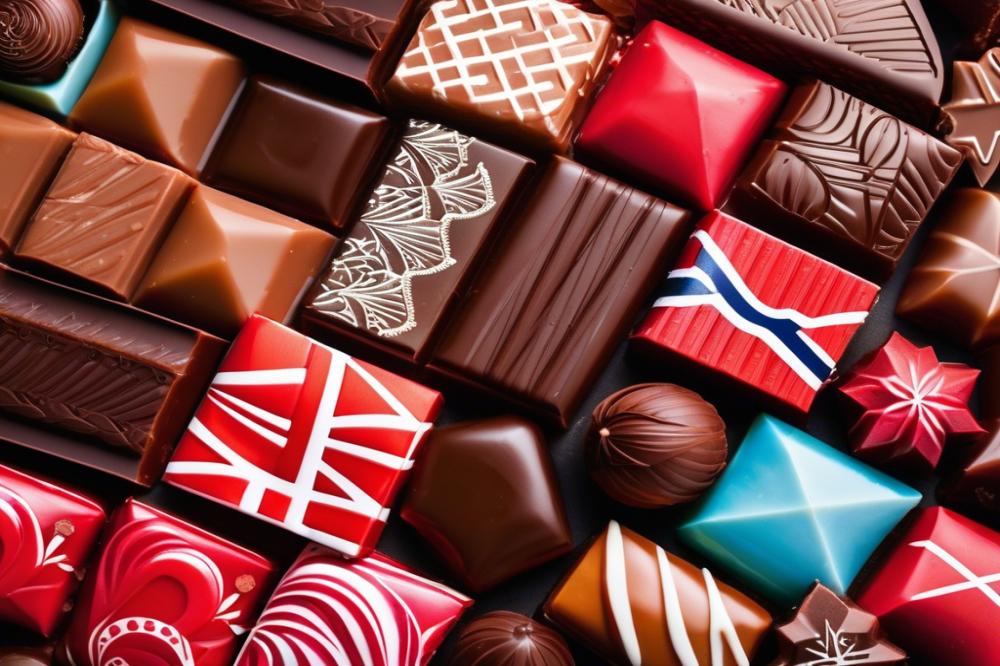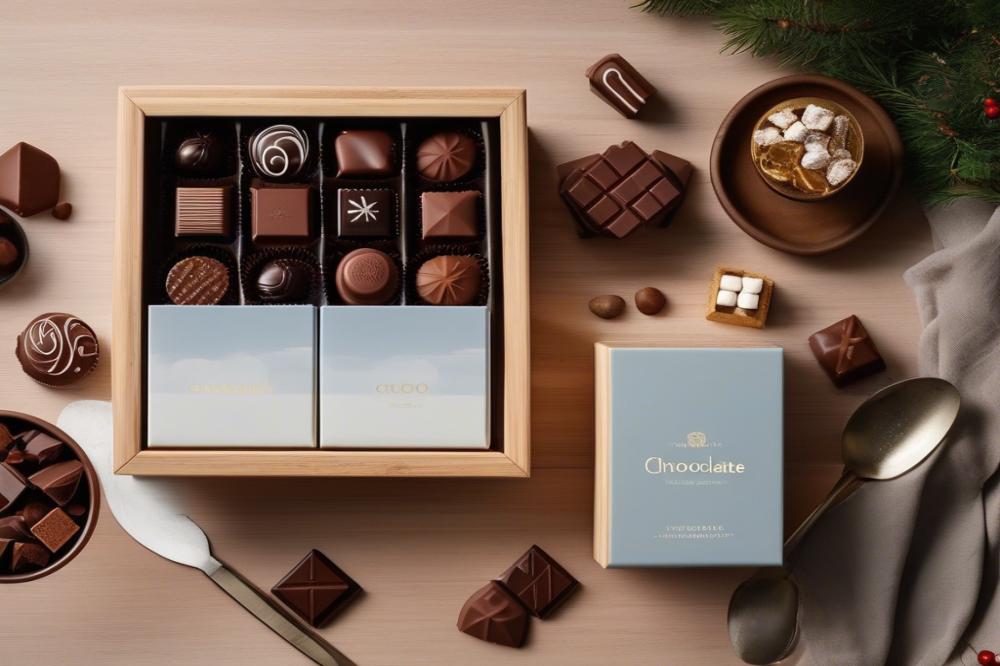Essential Skills and Talents Needed for artisan chocolate making
Across America, a vibrant world of artisan chocolate making is emerging. This craft captures the hearts of many. Chocolate lovers appreciate the complexity of flavors and textures. Crafters produce their products with guidance from traditional methods. From bean-to-bar, the process celebrates a commitment to quality and creativity.
Mastering chocolate crafting is more than just melting chocolate. It involves meticulous techniques, such as temper chocolate and making smooth ganache for fillings. Professionals explore innovative flavor pairing to surprise and delight customers. Each chocolate piece tells a story, weaving together techniques and tastes.
The journey to becoming proficient in this field requires essential chocolate skills. Attention to detail is crucial. Every step, from recipe development to sensory evaluation, plays a vital role. Presentation skills also matter significantly, as visual appeal can attract customers before they even take a bite.
This article aims to explore the specific skills and talents required for success in artisan chocolate making. By highlighting what it takes to excel in this craft, we hope to inspire aspiring chocolatiers and enthusiasts alike. Understanding the labor behind each delicious bite can deepen appreciation for this timeless tradition. Let’s dive deeper into the world of artisan chocolate and unveil the artistry behind this sweet delight.
Fundamental Skills in Artisan Chocolate Making

Understanding the bean-to-bar process is essential for anyone serious about chocolate crafting. This method involves transforming raw cacao beans into finished chocolate bars. Each step, from sourcing beans to grinding and refining, plays a crucial role. Knowing how to choose quality beans directly impacts the final flavor. Thus, a chocolatier needs a keen sense of sensory evaluation to appreciate the subtleties of different beans.
Mastering chocolate tempering techniques is another vital skill. Tempering chocolate involves heating and cooling it carefully, creating a smooth and glossy finish. Properly tempered chocolate also snaps and melts beautifully in your mouth. Without this skill, chocolates can end up dull or bloomed, which affects both taste and appearance. Professionals often practice this technique repeatedly to perfect it.
Attention to detail is key in crafting chocolate. Small variations in temperature or timing can lead to different results. A chocolatier must focus on each component, including flavor pairing, to create harmonious blends. For instance, experimenting with ganache techniques can yield delightful fillings for truffles. When developing a recipe, each ingredient’s quality and proportion matter greatly for the final product.
Presentation skills also cannot be overlooked. Beautifully arranged chocolates entice customers and create a memorable experience. A proper understanding of aesthetics elevates chocolate from a simple treat to a visual delight. Therefore, balancing taste and appearance is an art in itself. Every detail, from color to texture, contributes to the overall enjoyment of chocolate.
Creative Skills for Flavor and Texture

Finding the right flavor pairing can elevate chocolate to new heights. Skilled artisans explore various ingredients to create surprising combinations. For instance, pairing chocolate with spices can lead to exciting results. Professionals often experiment with herbs, fruits, and even tea. This approach opens doors to flavor profiles that captivate the senses.
Developing ganache techniques is essential for any chocolate maker. The perfect ganache balances chocolate and cream to achieve smoothness. Variations can include additional ingredients, like liqueurs or fruits, to enhance richness. Mastery of this technique allows for versatile fillings that can be used in truffles or as cake icing.
Chocolate crafting techniques go beyond simple melting and mixing. Tempering chocolate is a crucial skill that affects texture and shine. Proper tempering creates a smooth finish and ensures a satisfying snap when broken. This attention to detail is vital for presenting chocolate beautifully.
Artisans also focus on recipe development to refine their craft. Each recipe can lead to different textures and flavors, pushing the boundaries of traditional chocolate. A sense of innovation is essential when choosing ingredients. Understanding the bean-to-bar process enriches their knowledge, as it provides insight into how beans affect taste.
Presentation skills are equally important in this field. Beautifully crafted chocolates can entice customers and elevate the experience. A simple truffle can transform into a work of art with the right finishing touches. Attention to detail is key from the initial creation to the final display.
Sensory evaluation plays a significant role in perfecting chocolate. This practice involves tasting and analyzing chocolate to assess its quality. Professionals often consider texture, aroma, and flavor intensity. Feedback from this process helps them refine their techniques and choices.
Technical Skills in Chocolate Preparation
Understanding the chocolate tempering process is crucial for any aspiring chocolatier. This technique helps to stabilize chocolate by carefully controlling its temperature. Properly tempered chocolate exhibits a beautiful shine and an appealing snap. When the process is done wrong, the texture can become dull and unpleasant. Learning to temper chocolate takes practice and precision.
Recipe development is another vital skill in chocolate crafting. A good chocolatier must pay close attention to detail when creating new combinations. Variations in ingredients can lead to different textures and flavors. Chocolate can transform with the right balance of sweetness and richness. Different types of chocolate may require adjustments to the recipe, especially when utilizing unique flavor pairings.
Being able to evaluate chocolate using the senses is important. Sensory evaluation allows chocolatiers to judge the quality of their products. A good chocolatier assesses appearance, aroma, and taste. Every aspect contributes significantly to the overall experience. This skill helps in refining techniques, such as ganache methods or filling creations.
Documentation of processes and recipes plays an essential role in maintaining consistency. When making chocolate from bean-to-bar, it’s important to replicate successful flavors and textures. Failure to record precise measurements can lead to disastrous results. Each batch should reflect the utmost quality without unexpected variations. Mastery in this area can set artisans apart in a competitive market.
Finally, presentation skills cannot be overlooked. The way chocolate is displayed can attract customers and enhance their experience. Each piece should look appealing, inviting them to indulge. Chocolatiers often experiment with various shapes and colors. This adds an extra layer of artistry that complements the flavors.
Presentation and Marketing Skills
Importance of Presentation Skills in Artisan Chocolate
Presentation skills play a vital role in the success of chocolate crafting. Chocolates are not just treats; they must evoke desire and curiosity. A beautifully arranged display can attract customers and invite them to explore new flavors. When making chocolate, artisans must consider how their creations look and feel. This involves attention to detail from the design of the product to the arrangement on the shelf. Effectively showcasing chocolates can create an emotional connection with potential buyers.
Visual Appeal and Packaging Techniques
Visual appeal enhances the overall experience of tasting chocolate. Attractive packaging draws the eye and makes the product stand out. For example, unique boxes or wrappers can add charm to the chocolates. The correct colors and textures can evoke specific feelings. Some artisans experiment with eco-friendly materials, making sustainability a selling point. With the right package design, chocolates can convey their story even before they are tasted. Creative shapes and sizes also contribute to the excitement during sensory evaluation.
Building a Brand and Storytelling in Chocolate Marketing
Building a brand requires more than just a logo; it needs a story. Successful chocolate makers communicate their journey through various marketing techniques. They can share the origins of their beans and their passion for recipe development. Many artisans highlight their bean-to-bar processes to connect with customers. Storytelling makes the chocolate unique and fosters loyalty among fans. Social media platforms can expand reach and engage with the audience. Through videos or photos, consumers can witness ganache techniques and embrace the art of chocolate tempering. Engaging content humanizes the brand and encourages a community of chocolate lovers to emerge.
Wrapping Up Skills and Aspirations in Chocolate Crafting
Chocolatiers must master various skills to excel in their craft. Attention to detail is critical when creating exquisite chocolates. Knowledge of ingredients and techniques, such as how to temper chocolate, plays a significant role in achieving quality results. Understanding flavor pairing can transform a simple product into a delightful experience. Experience with tools, equipment, and the science behind flavor profiles is also essential.
Aspiring chocolatiers should feel encouraged to dive into this sweet adventure. Passion for chocolate can drive individuals to explore and experiment. Learning from mistakes is part of the process; every error is an opportunity for improvement. Workshops and classes can offer a great start to building these necessary skills.
Looking ahead, the world of chocolate crafting is ripe for innovation. New trends are emerging, from sustainable sourcing of ingredients to fascinating flavor combinations. Technology could also revolutionize production methods. As more people seek artisanal products, this craft is likely to evolve in exciting ways. Joining this journey now could lead to a fulfilling career or hobby.



